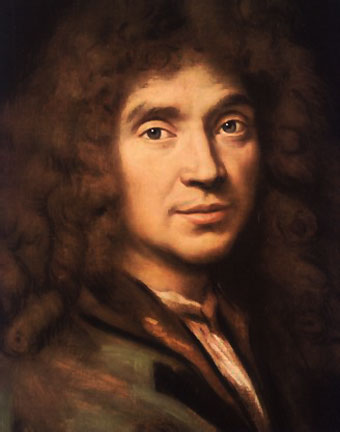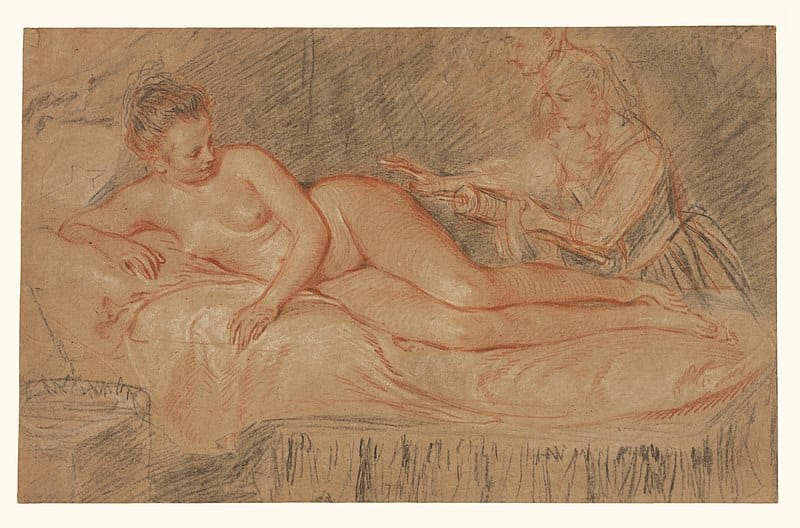The Salons and Molière

For over a hundred years the arts and culture in France were controlled by aristocratic women and intellectual life was dominated by the salons. Initially the leading salon of the era was the Marquise de Rambouillet’s, from 1620 till 1645, but it became pretentious, as they all do eventually, even Ninon’s.
Molière (below) couldn't resist. He satirized the salons in Les Précieuses ridicules (1659) and kept it up through several other plays such as Les Femmes savantes (1672).

Voltaire was saying much the same thing in Candide (1759) a century later: "The supper was like most Parisian suppers, first of all silence followed by an indistinguishable noise of words, then some witticisms, most of which were insipid, some scandal, some false reasoning, a little politics and a good deal of slander. Some new books happened to be mentioned."
The rich were an easy target and they still are. Molière mocked them relentlessly, along with their doctors and apothecaries, their purges and clysters (enemas) and bleedings - notably in L'Amour médecin (1665) and his last play Le Malade Imaginaire (1673). Seems timely given today's continuing interest in colonic irrigations.

What are we to make, then, of drawings like this one by Watteau of a woman about to have an enema administered by her maid? It is tempting to think of it in a satirical context - lifestyles of the idle rich and famous. Was there a better metaphor for the annoying rich than constipation or "wind"? With Watteau's paintings and drawings though, there is more going on here - a tenderness perhaps along with the eroticism - that you do not find in Molière or Voltaire or the paintings of Boucher and Fragonard.
Watteau himself was never in great health - he was dead at 36 - and it would seem that he was never much interested in the more frivolous pursuits of the aristocracy. He has a number of paintings of the aristocracy relaxing in the park and entertaining themselves with Fête galante - Commedia dell'Arte theatricals and the like. Before he died he asked that his erotic paintings and drawings be destroyed. They duly were - and only the above image survives.
